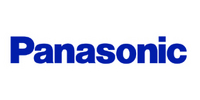Panasonic Develops High-Capacity Lithium-Ion Battery Cells that can Power Laptops and Electric Vehicles
 |
OSAKA - December 25, 2009: Panasonic Corporation today announced the development of two new 18650-type (18 mm in diameter, 65 mm in height) high-capacity lithium-ion battery cells[1] for use in laptop computers and environmentally-friendly energy technologies. The company boosted the capacity of 18650-type battery cells, which are widely used in laptops, by improving electrode materials. The newly-developed high-capacity 3.4 Ah and 4.0 Ah lithium-ion battery cells have an improved nickel based positive electrode[2], and the 4.0 Ah cell uses a silicon based alloy for the negative electrode instead of carbon[3].
The two battery cells can not only extend operating time of laptop computers but also power electric vehicles when assembled in a module[4]. Panasonic is currently testing a battery module that is constructed from many pieces of 18650-type battery cells. When used for the module, the new battery cells can also serve as a high-energy storage system for clean energy technologies including household photovoltaic systems and fuel cells.
Lithium-ion battery cells have become indispensable as a power source for cordless equipment, such as laptops, that supports a ubiquitous society. As cordless devices become more sophisticated and powerful, they require more robust battery cells.
At the same time, rising environmental concerns call for widespread practical use of renewable energy and electric vehicles to reduce CO2 emissions. To realize, high-capacity storage systems are essential. Because lithium-ion based storage systems are more compact and lighter than conventional storage systems using other types of rechargeable battery cells, high hopes are placed on the practical application of lithium-ion storage systems. The increasing range of applications for storage systems also demands higher levels of capacity, output, reliability and safety, along with high cost performance.
Panasonic has responded to these challenges with the new battery cells, employing its unique high capacity nickel based positive electrode technology as well as its material and processing technology which prevents deformation of the alloy-based negative electrode when subjected to repeated charge and discharge.
Development of the nickel based positive electrode enabled Panasonic to produce high-capacity, lightweight and highly durable lithium-ion battery cells. By improving the positive electrode, it has achieved the 3.4 Ah cell which offers 20 percent greater capacity than the current 2.9 Ah model. The 3.4 Ah cell will be mass produced in fiscal 2012 ending in March 2012. The 4.0 Ah cell, which has 30 percent greater capacity compared to the 2.9 Ah cell, uses a next generation electrode material, a silicon based alloy for the negative electrode, substituting carbon. The 4.0 Ah cell will be mass produced in fiscal 2013 ending in March 2013. These high-capacity battery cells can make high-energy battery modules.
On the new battery cells, Panasonic holds 337 patents in Japan and 136 in other countries including pending applications.
[1] Lithium-ion battery: Non-aqueous electrolyte rechargeable battery that
commonly uses lithium metal oxide as the positive electrode and carbon as
the negative electrode.
[2] Nickel based positive electrode: Panasonic's proprietary positive electrode material based on LiNiO2, allowing for high
capacity and durability.
[4] Battery modules: Power source for the environmental energy field,
consisting of multiple 18650-type lithium-ion battery cells connected in
series and parallel. Announced in October 2009 by Panasonic.


